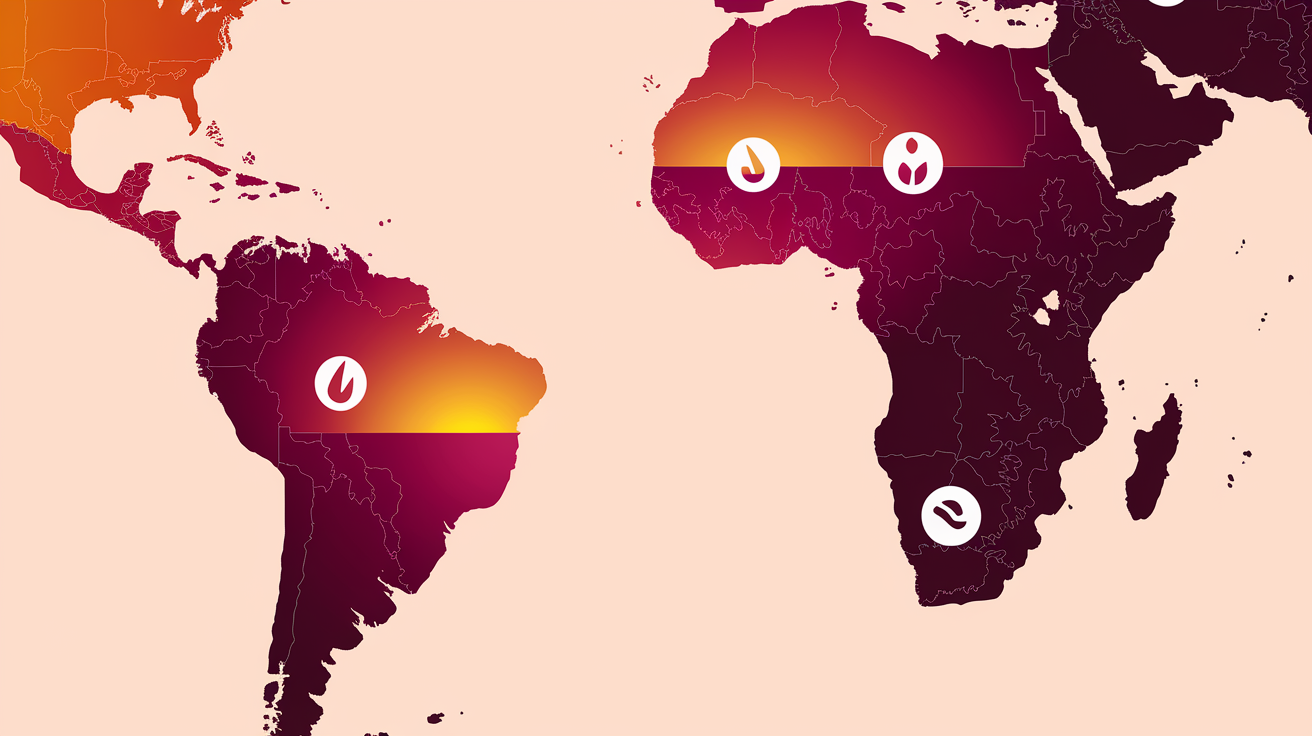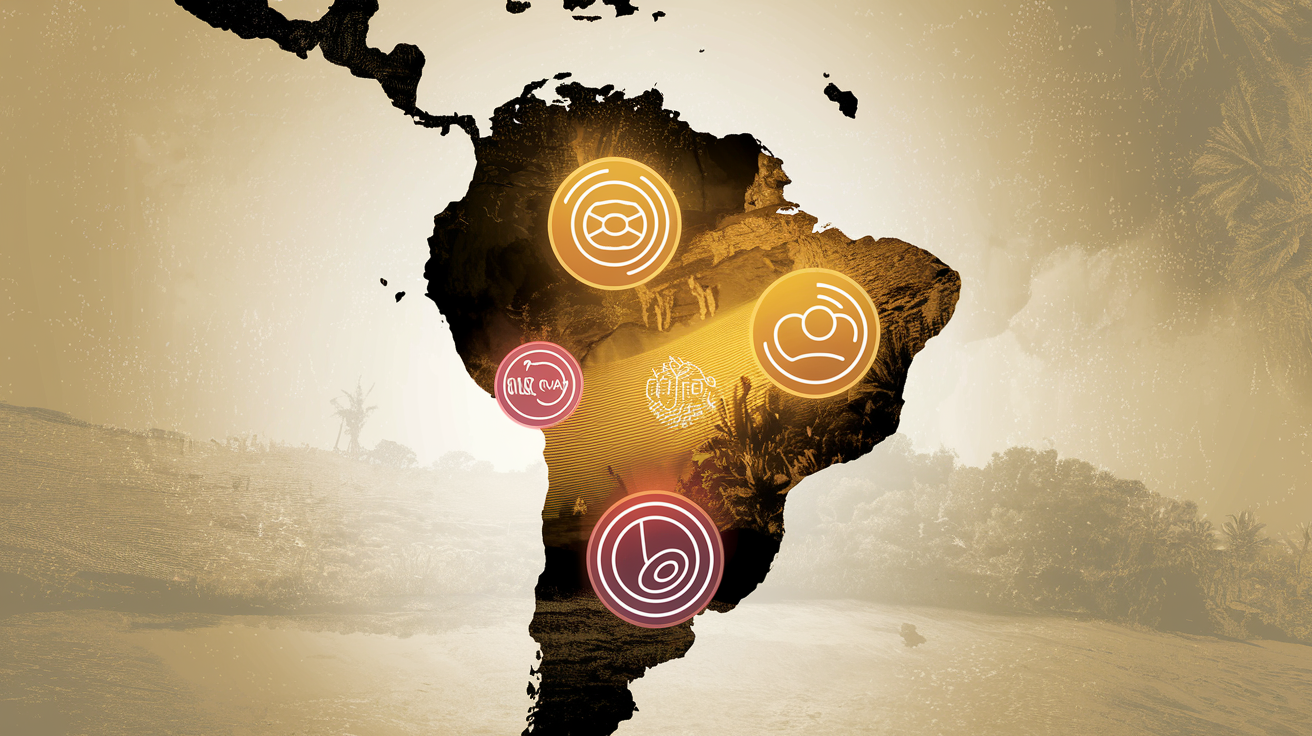The commodity markets in Latin America and Africa are like enormous treasure chests, having the potential to fuel the global economy. However, political instability and geopolitical tensions threaten their role as stable suppliers. Latin America faces a growing demand for lithium, while Africa confronts infrastructural and geopolitical challenges. This article highlights the geo-economic prospects and infrastructural barriers that investors and private stakeholders must consider to successfully navigate this complex environment.
Geo-Economic Challenges and Opportunities in the Commodity Markets of Latin America and Africa

Latin America and Africa represent two of the world’s richest regions in raw materials and play an indispensable role in the global trade of commodities. Their geo-economic significance is primarily supported by their ability to supply vital raw materials, essential for progress in industries, particularly in the technology and automotive sectors.
Latin America, with its impressive variety of resources, faces significant geo-economic challenges. Countries like Chile, with its copper reserves, and Argentina, along with Chile, with significant lithium production, a key component for electric vehicle batteries, are particularly important. Despite the wealth of these resources, these countries struggle with political instability, which threatens investments and leads to uncertainties in the extractive areas. Major political upheavals and reforms can lead to significant fluctuations in the production and distribution of raw materials, jeopardizing long-term contracts and international agreements. The region also benefits from strong regional trade agreements such as Mercosur and the Pacific Alliance, which have the potential to contribute to economic stability and attract investments.
The geo-economic landscape of Africa presents a slightly different picture. The continent is a treasure of various raw materials such as platinum, cobalt, and bauxite, with countries like the Democratic Republic of the Congo being particularly important for cobalt extraction. However, the expansion and utilization of these resources are hampered by enormous infrastructural deficits and an unstable political context. Here, basic logistical networks often need to be created to make the transportation and trade of raw materials more efficient. African countries benefit, however, from initiatives like the African Continental Free Trade Area (AfCFTA), which aims to improve intra-regional trade.
When comparing these two regions, the geo-economic paradigms on both sides are unique and characterized by specific challenges. While Latin America primarily struggles with political instability and the associated economic uncertainties, Africa’s issues have long revolved around infrastructural deficits and external geopolitical influences, particularly from major powers like China. It is evident that both Latin America and Africa offer significant potential beyond their raw material wealth, but targeted investments and strategic political reforms are necessary to secure and strengthen their roles as reliable suppliers of raw materials.
Commodity Trade: Infrastructure and Logistic Issues in Latin America and Africa

The economic competitiveness of the commodity markets is closely linked to the quality of their infrastructure and logistical networks. In the regions of Latin America and Africa, significant deficits exist in this area, which affects their ability to supply raw materials efficiently and at low costs in global markets.
Latin America, blessed with a variety of natural resources, must still contend with inadequate transport networks. Delays in the development of road and rail networks lead to high transportation costs and delays in the delivery of raw materials. Ports, which, despite their strategic importance, often lack sufficient capacity, exacerbate these logistical bottlenecks. Additionally, unstable energy supply in some regions hinders the continuous production and processing of raw materials. These challenges represent significant obstacles, as they undermine competitiveness in global markets.
In contrast to Latin America, Africa presents even more severe infrastructural weaknesses. Here, deficits in rural areas are particularly pronounced. Roads, bridges, and ports are often underdeveloped, severely limiting access to mineral wealth. Security risks due to political instability and paralyzing bureaucracy hinder the development of further infrastructure. Together, these factors make the transportation of raw materials a dangerous and unreliable endeavor.
Logistically, both regions face further obstacles. In Latin America, bureaucratic processes, especially for customs clearance, are complex and slow. This is compounded by complex regulatory frameworks that complicate trade. At the same time, adherence to strict environmental and social standards requires additional investments, further reducing profit margins.
Africa, on the other hand, suffers from a lack of comprehensive trade agreements and high-quality logistical services. These deficits limit not only exports abroad but also increase dependence on a few markets. Inadequate integration of modern technologies further renders management processes inefficient.
The solution to these challenges requires, first and foremost, massive investments in critical infrastructure such as roads, ports, and energy supply. Streamlining customs procedures and regulations could facilitate cross-border trade. Technological innovations in logistics could make overall processes more efficient. Finally, more intense international cooperation would be necessary to strengthen the economic integration of both regions and reduce their risks.